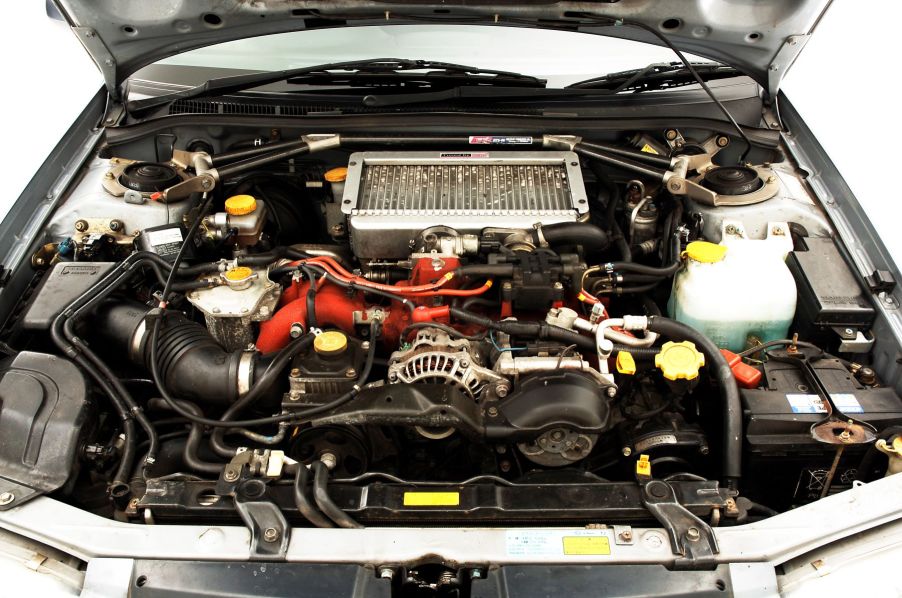
Are Subaru Flat-Four Engines Better Than Inline-Four Engines?
Subaru is well-known for making some great cars that can handle the outdoors well, but underneath the hood of every Subaru is something unique. This is because Subaru equips most of its vehicles with flat-four engines, which are commonly called boxer engines, and that’s not something many automakers do. Here’s a look at Subaru’s flat-four engines and how they compare with the inline-four engines that are more common in the automotive world.
The pros and cons of inline-four engines

As Jalopnik wrote, one of the main pros of an inline-four engine is its size. Inline-fours are physically smaller than boxer engines are, and that just has to do with how the two types of engines work. Inline-fours, being smaller in terms of dimensions, means that automakers have more room to play with for other components that the car needs.
Another great thing about inline-fours is that they are simpler engines than boxer engines are. An inline-four only has a single cylinder head, and it has fewer moving parts. This is a great attribute to have when it comes time to perform routine maintenance or repairs on a car, as it’ll be easier to do those things on an inline-four than on a boxer.
However, it’s not all good things for the inline-four. Due to how the pistons are laid out and the firing order of those pistons, the end result is that inline-fours aren’t very smooth engines. This is because the secondary forces coming from those pistons aren’t balanced, and automakers need to add balance shafts to smooth those forces out.
The pros and cons of Subaru’s flat-four engines
That balance issue is the main problem that Subaru’s flat-fours solves. This is simply due to how the pistons are laid out, and it’s also why flat-fours are called boxer engines, as the pistons look like two boxers about to fight each other. Due to the design and firing order of a boxing engine, the secondary forces from the pistons cancel each other out, resulting in the smooth engine performance that many Subaru fans are aware of.
On top of that, the boxer engine’s design allows the car to have a lower center of gravity. This provides two big benefits, as a lower center of gravity can mean improved driving dynamics, and it can also improve the car’s safety. Boxer engines can improve safety because the lower center of gravity makes it more likely for the engine to “tuck” under the passenger compartment during car accidents, according to Jalopnik.
However, there are two significant cons of a boxer engine. Boxer engines are physically larger than inline-four engines, and this may limit an automaker’s options in terms of the stuff they can add under the hood. Additionally, while a boxer engine is smoother than an inline-four, boxer engines have a balance issue. This has to do with the pistons not being perfectly aligned across from each other, resulting in the engine trying to rotate on the vertical axis.
Subaru isn’t the only automaker that uses flat-fours
While Subaru has adopted flat-four engines on a large scale, other automakers are embracing these engines, too. Toyota, which collaborates with Subaru often, uses a boxer engine in the Toyota 86, for example.
Another automaker that uses boxer engines is Porsche. Some of the most popular Porsche models already use boxer engines, including the Porsche 911. In Porsche’s case, though, those engines aren’t flat-fours, and instead, they have six-cylinders.


